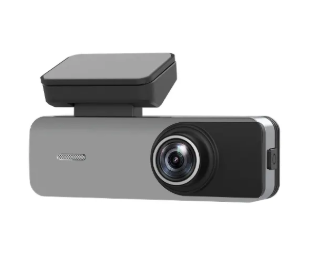Core Connectivity Differences Between 4G and WiFi Cameras
Network Requirements and Availability
Looking at what kind of network these devices need, most 4G cameras work through cell phone towers. They require a SIM card just like a smartphone does, plus people have to pay monthly fees for service. This reliance on cell signals becomes a problem when trying to install them far away from cities or towns where reception drops off completely. On the other hand, WiFi cameras connect to whatever internet setup already exists nearby. These tend to perform better in city environments since most homes and businesses there have decent broadband access. While 4G models do cover larger geographic areas because of the cell network reach, users often find them slower than WiFi alternatives in places with good wireless infrastructure, like apartment complexes or office buildings with multiple access points throughout the space.
Data Transmission Methods
How cameras send data varies quite a bit when comparing 4G models to WiFi ones. The 4G variety works through cell phone towers so people can check what they're seeing pretty much anywhere there's signal. That makes them really useful for monitoring remote spots where regular internet just isn't dependable. WiFi cameras work differently though. They need a home or office network to function properly. Their performance basically hinges on how good the internet connection happens to be at that moment. When picking between these options, folks should think about lag time and how fast things move. 4G networks sometimes get backed up, especially during rush hours or big events. WiFi tends to offer steadier speeds most of the time since it operates within a specific location rather than across wide areas.
Power Sources and Installation Flexibility
Battery Life and Solar Options for 4G Cameras
Most 4G security cameras come with pretty good battery life because they're designed to work efficiently with mobile networks. Some top models can last as long as six months between charges, though actual performance depends on how frequently they're recording and transmitting data. That kind of runtime makes them great for keeping an eye on things without constant maintenance. For folks living or working in places where there's no electricity nearby, many 4G cameras now include solar panels too. These solar options take away the need for regular power connections completely. The ability to run off sunlight means these cameras can be installed almost anywhere, including mountain trails or rural properties where running wires just isn't practical.
Wired vs Wireless Setup for WiFi Cameras
WiFi cameras bring a lot of flexibility because they usually work wirelessly, which makes setting them up much easier than dealing with all that messy wiring. The fact that they don't need physical connections means people can put them almost anywhere that fits their particular situation. But there are times when folks still need to hook up to an outside power source or run an Ethernet cable instead. This happens mostly in places where the WiFi just doesn't reach well enough. When deciding between going wired or staying wireless, it really comes down to what exactly the space requires. Wireless options tend to win out for short term installations since they're so easy to move around. On the flip side, if someone is dealing with poor reception spots, running wires through walls might actually provide better long term stability even though it takes more effort upfront.
Ideal Use Cases for Each Camera Type
Remote Areas and Off-Grid Locations (4G)
4G cameras work really well for keeping an eye on places far from regular internet connections where there's no proper network setup. Farmers, people tracking animals in nature reserves, and folks watching construction projects find them especially handy. Since they don't rely on local Wi-Fi networks, these cameras keep running smoothly even when wireless signals drop out. When cell service is good enough, they manage all sorts of smart features including motion sensing and sending notifications too. Take a look at the numbers: around two thirds of rural spots across America still struggle with dependable internet access according to recent data. That makes 4G tech pretty much essential equipment for anyone needing security solutions in those hard to reach areas.
Urban Environments with Stable Internet (WiFi)
WiFi cameras work really well in cities where most people have fast internet connections already running through their buildings. These devices can send live footage and save recordings without much hassle at all, which makes them great choices for apartment complexes, office buildings, and even small businesses downtown. When installed properly, many models will connect right into existing smart home setups, letting property managers check feeds from multiple locations while also triggering lights or alarms when needed. More and more cities are adopting this kind of tech because it just works better than older options. No need to worry about monthly data fees or relying on cell service that might drop out during critical moments. For anyone looking to secure their space in a busy metropolitan area, going with WiFi based surveillance simply makes more sense than trying to manage complicated wiring or expensive subscriptions.
Security Features and Data Storage
Encryption Standards for Cellular and WiFi Networks
Cameras that work with both 4G and WiFi connections generally have strong encryption built in to keep data safe during transmission. The 4G option gives an extra layer of protection from local hacking attempts because it uses cellular networks instead of being connected directly to home networks. For instance, most 4G systems use something called AES encryption, known across the industry as one of the best ways to protect digital information. On the other hand, WiFi based cameras typically depend on common wireless security measures like WPA2 or WPA3 protocols to guard against unauthorized access. Many people worry about their networks getting hacked, so knowing how secure different camera options really are matters a lot. When looking at which type of camera makes sense, understanding these encryption differences helps anyone who cares about keeping their footage private make better decisions.
Local vs Cloud Storage Solutions
When deciding between local versus cloud storage for 4G and WiFi cameras, there's quite a bit at stake for most users. People who install 4G cameras tend to go with cloud storage because they need that remote access feature so badly. Meanwhile, WiFi camera owners often prefer storing footage locally on SD cards or external drives since this approach saves money in the long run. Cloud storage has become popular mainly because it lets people check their security feeds from anywhere, plus the footage stays safe even if someone breaks into the property and damages the cameras themselves. Local storage alternatives get good marks too, especially when looking at the bottom line. No monthly bills means big savings over time, something many small business owners appreciate. Looking at how fast cloud tech is advancing gives us clues about what direction the surveillance industry might be heading next. Understanding all these different storage options helps consumers pick what works best for them depending on how important instant access to recordings is versus what kind of budget they actually have available.
Cost Analysis: Upfront and Ongoing Expenses
Cellular Data Plans vs WiFi Subscription Fees
The main thing people often overlook when looking at 4G versus WiFi cameras is how much they'll spend on staying connected. With 4G models, folks end up buying those cellular data plans month after month, and that adds up fast particularly if someone needs multiple cameras running all the time. Take the Eufy Security 4G Starlight Camera as a real world example nobody wants to forget their phone bill anymore because without that mobile data plan, the camera just stops working completely. WiFi options tell a different story though. Most homeowners find themselves paying once for good internet service and then forgetting about it until maybe next year. The numbers speak volumes here too. Monthly data fees usually run between thirty to fifty bucks per device, whereas setting up proper WiFi might mean splurging on a decent router upfront but no recurring charges afterward.
Long-Term Maintenance and Equipment Costs
When looking at what these systems will cost over time, there's a big difference between 4G and WiFi cameras that really matters if someone wants to keep surveillance going for years. Take the Eufy Security 4G Starlight Camera as an example. These kinds of cameras tend to have higher ongoing costs because people need to replace SIM cards regularly and pay those monthly fees too. On the other side of things, WiFi cameras generally don't need as much upkeep but come with their own challenges. Businesses often find themselves needing to spend money on good quality network gear just to keep data safe during transmission. This helps create a solid security system without all the headaches. Breaking down what each option actually costs in the long run helps both companies and regular folks choose wisely based on what they need from their surveillance setup. A case in point would be spending around $200 upfront on decent security networking hardware for WiFi cameras. While this sounds like a lot at first glance, it actually saves money down the road compared to constantly paying for cellular data plans month after month.
FAQ
What are the advantages of using 4G cameras in remote areas?
4G cameras are ideal for remote areas as they do not rely on local internet networks and can provide surveillance through cellular networks, ensuring uninterrupted monitoring where internet access is limited.
How do WiFi cameras perform in urban environments?
WiFi cameras perform exceptionally well in urban environments with stable and high-speed internet, making them perfect for places like homes and offices due to their ability to integrate with smart home systems.
What factors should be considered when choosing between local and cloud storage for cameras?
Considerations should include the need for remote access, budget constraints, and security preferences. Cloud storage offers easy remote access and enhanced security, while local storage can be more cost-effective over time.
Are there any ongoing costs associated with 4G and WiFi cameras?
Yes, 4G cameras often require ongoing cellular data plans, which can be costly. WiFi cameras typically involve lower ongoing costs, usually related to internet subscriptions and potential equipment upgrades for enhanced security.
What encryption standards do WiFi and 4G cameras use?
4G cameras use Advanced Encryption Standards (AES) for secure data transmission, while WiFi cameras rely on WPA2/WPA3 protocols to ensure data privacy.
Table of Contents
- Core Connectivity Differences Between 4G and WiFi Cameras
- Power Sources and Installation Flexibility
- Ideal Use Cases for Each Camera Type
- Security Features and Data Storage
- Cost Analysis: Upfront and Ongoing Expenses
-
FAQ
- What are the advantages of using 4G cameras in remote areas?
- How do WiFi cameras perform in urban environments?
- What factors should be considered when choosing between local and cloud storage for cameras?
- Are there any ongoing costs associated with 4G and WiFi cameras?
- What encryption standards do WiFi and 4G cameras use?




